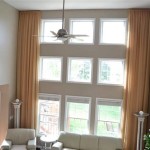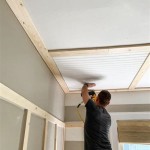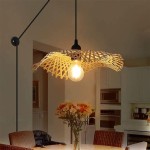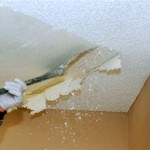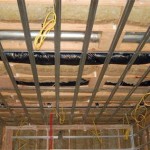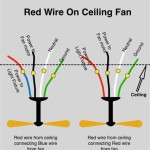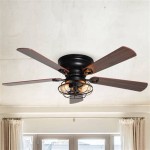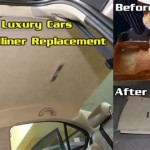Beadboard Ceiling Tongue and Groove: A Comprehensive Guide
Beadboard ceilings offer a classic, timeless appeal, adding architectural interest and texture to any space. The signature vertical grooves create a visually engaging pattern that can enhance a room's aesthetic, whether aiming for a cozy cottage feel or a more refined, traditional look. Understanding the nuances of beadboard, particularly its tongue and groove system, is essential for anyone considering this ceiling treatment.
Beadboard's history traces back to the late 19th and early 20th centuries, originally serving as a practical and affordable wall covering. Its popularity stems from its durability, ease of installation, and ability to conceal imperfections in walls and ceilings. While initially used for utilitarian purposes, beadboard quickly evolved into a decorative element, gracing homes with its characteristic charm.
The defining feature of beadboard lies in its "beads" – the raised ridges running vertically along the planks. These beads are formed during the milling process, which also creates the tongue and groove profile. The tongue and groove system, a hallmark of beadboard, is crucial for seamless installation and a smooth, continuous surface. Each plank has a protruding "tongue" along one edge and a corresponding "groove" along the opposite edge. This interlocking mechanism allows for tight fitting, eliminating visible seams and enhancing the overall aesthetic.
Several materials are commonly used in the production of beadboard, each offering distinct advantages and disadvantages. Wood, including pine, fir, and MDF (Medium Density Fiberboard), remains a popular choice due to its natural beauty and traditional appeal. PVC (Polyvinyl Chloride) beadboard provides a moisture-resistant alternative, making it suitable for bathrooms, kitchens, and other high-humidity environments. Other materials, such as vinyl and fiber cement, offer varying degrees of durability, moisture resistance, and cost-effectiveness.
Selecting the appropriate material depends on the specific application and desired aesthetic. Wood requires regular maintenance, including painting or staining, to protect it from moisture and wear. PVC, on the other hand, requires minimal upkeep and offers superior moisture resistance. The cost of materials also varies significantly, with wood generally being more expensive than PVC or vinyl.
Installing beadboard ceilings requires careful planning and execution. Accurate measurements are essential for determining the required amount of material and ensuring proper alignment. The ceiling must be clean, dry, and level before installation begins. Depending on the chosen material, beadboard can be installed using nails, screws, or adhesive. Using a nail gun can significantly expedite the installation process, particularly for larger areas.
During installation, it's crucial to maintain consistent spacing between planks. Using spacers can ensure uniformity and prevent gaps. For complex ceiling designs or challenging angles, professional installation is recommended. A skilled installer can address issues such as uneven ceilings and intricate corners, ensuring a flawless finish.
Finishing beadboard involves painting or staining the surface to enhance its appearance and protect it from the elements. Priming the beadboard before painting or staining ensures proper adhesion and a uniform finish. Various paint colors and stain finishes can be applied to achieve the desired aesthetic, from classic white to bold, vibrant hues.
Maintaining the beauty and longevity of beadboard ceilings requires regular cleaning and occasional maintenance. Dusting the surface regularly can prevent buildup and maintain its luster. For more thorough cleaning, a damp cloth and mild detergent can be used. Wood beadboard may require periodic repainting or staining to protect it from moisture damage and wear.
Beadboard ceilings offer a versatile design element, adaptable to various interior styles. From traditional farmhouses to modern coastal cottages, beadboard can add character and charm to any space. Its ability to create a sense of warmth and texture makes it a popular choice for living rooms, bedrooms, dining rooms, and even kitchens.
The distinct vertical lines of beadboard can also contribute to the perception of higher ceilings, making it a particularly effective solution for rooms with lower ceilings. Furthermore, the grooves can help to diffuse sound, potentially reducing echoes and improving acoustics within a space. This characteristic makes beadboard a suitable option for rooms where noise control is a concern.
Choosing beadboard for a ceiling involves considering various factors, including the desired aesthetic, budget, and maintenance requirements. Understanding the different materials available, the installation process, and the long-term maintenance needs will help homeowners make informed decisions. The classic appeal and versatility of beadboard continue to make it a popular choice for adding timeless elegance and architectural detail to ceilings.

1 In X 4 12 Ft Common Tongue And Groove Whitewood Ceiling Board 505146 The Home

Beadboard Ceiling Panels Ceilings Armstrong Residential

Prefinished Pine Tongue And Groove Beadboard Walnut

Pvc Tongue Groove Double Beaded Plank Blind Nail I Elite Trimworks

Beadboard Inexpensive And Versatile Twin Cities Bungalow Club

Tongue Groove Protected Wood Boards 30 Yr Warranty Windsorone

Edge Center Bead Tonque And Groove Ecb Ri Ma Ct

Putting Up A Bead Board Ceiling Tutorial
A More Durable Alternative To Cedar Beadboard Allura Usa

Beadboard Ceiling Panels Ceilings Armstrong Residential

